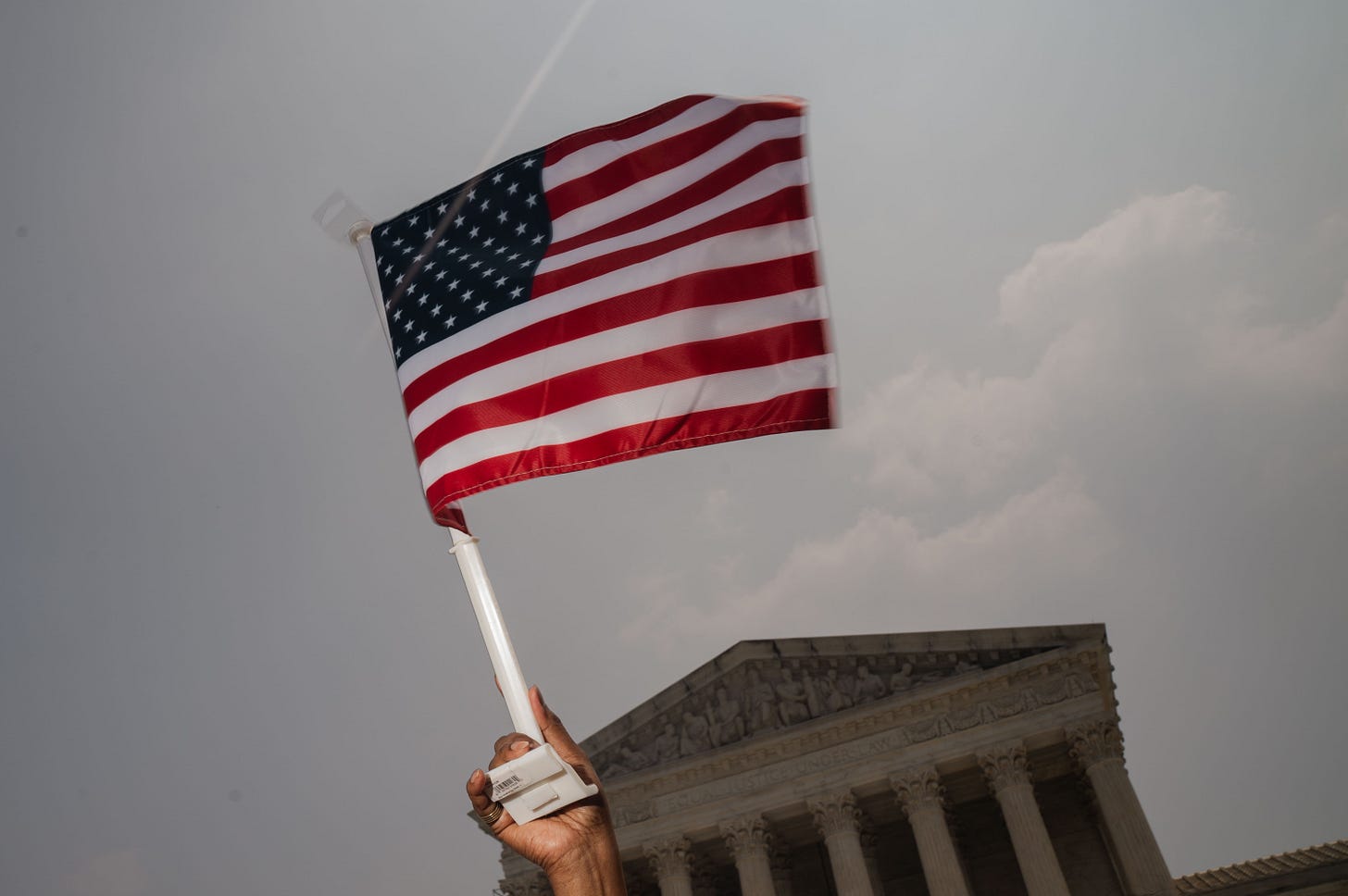Affirmative Action Ruling: Actually a Win for Minority Students
California and Michigan preview the unexpected benefits of doing away with the policy: more students in good state schools, and higher graduation rates.

AFTER 45 YEARS OF CONFUSING AND MISGUIDED DECISIONS on affirmative action in higher education, the Supreme Court on Thursday finally made clear that the Constitution forbids universities from giving preferential treatment based on race or ethnicity to some students in the admissions process. At issue were programs at Harvard University and the University of North Carolina that made race a significant “plus factor” for black and Hispanic applicants, to the disadvantage of both Asians and whites. The 6-3 decision was a broad and stunning rebuke to the notion that racial preferences can ever be benign.
It’s about time. Race has played a pernicious role in law, policy, and practice since the nation’s founding. The way to stop it from continuing to play that role is not to pretend that we can make up for past discrimination against one group by imposing new discrimination on another. The Harvard and North Carolina cases were perfect examples of why that is.
I have been intimately involved in affirmative action since its outset. In 1969, I helped found and run one of the first affirmative action programs for Mexican American students at the University of Colorado. In 1970, I moved to UCLA, where again I taught students admitted under affirmative action rules that accepted many ill-prepared students but put them at a tremendous disadvantage in completing their studies. In both instances, the black and Hispanic students in the programs came from failing high schools and with little preparation for the rigors of college. I taught remedial English programs in both schools. Some of my students read at an elementary school level and couldn’t write simple sentences, much less paragraphs or essays. They were set up to fail, and many of them did. Those who managed to make it through often self-segregated into ethnic studies classes where the focus was on grievance rather than academics.
I left university teaching in 1972, but continued to work on civil rights issues on the staff of the House Judiciary Committee from 1972 to 1975 and as director of the U.S. Commission on Civil Rights in the Reagan years. During that time and since, I watched as the rationale for affirmative action changed from compensating for past discrimination against blacks to promoting racial diversity, ostensibly to improve the quality of education for everyone. But the methods remained the same: applying different standards to students during the admissions process based on the color of their skin.
In 1995, I founded the Center for Equal Opportunity, which has since conducted studies on affirmative action admissions policies at some 80 colleges and universities. We’ve found that most selective schools give preference to black and, to a somewhat lesser degree, Hispanic students with often substantially lower test scores and grades than white and Asian applicants. In recent years, we’ve found that Asian students have been especially disadvantaged by such preferences for black and Hispanic applicants—and Harvard University had a particularly egregious system of keeping the proportion of Asian students in their classes lower than it would have been had race not been a factor. The irony is that at places like Harvard, many of the black beneficiaries of affirmative action are themselves elites: the children of affluent parents or, increasingly, immigrants from Africa and the Caribbean.
Presumably, now that the Court has ruled, the worst practices will be curtailed. But does that mean we’ll see drastic drops in the number of black and Hispanic college graduates going forward? Not likely, judging from what the experience of states like California and Michigan, which banned racial preferences in college admissions through statewide initiatives decades ago. In 1996, California voters adopted a state constitutional amendment outlawing racial preferences in admissions (an effort to repeal the amendment in 2020 failed overwhelmingly, even in districts carried by Joe Biden). As a result, fewer black and Hispanic students attended the state’s most elite universities, Berkeley and UCLA, but overall numbers in the statewide system went up, with more black and Hispanic students actually graduating than before the initiative passed. The reason is straightforward: Black and Hispanic students who would have been admitted to more elite campuses ended up attending colleges where their grades and test scores were the same as their white and Asian peers and competed with them on an equal footing.
UCLA professor Richard Sander has written extensively about the phenomenon California witnessed, including in a book with my colleague Stuart Taylor, Mismatch: How Affirmative Action Hurts Students It’s Intended to Help, and Why Universities Won’t Admit It. Sander’s most recent work estimates that law schools’ affirmative action admissions programs have actually produced fewer black lawyers, because those admitted to schools where their LSAT scores are substantially lower than their peers end up failing bar exams at substantially higher rates than black students with comparable scores who attended law schools where their scores were competitive with their white peers.
For all the hysterical rhetoric the Supreme Court decision is likely to engender in the coming days, the truth is we may discover that many black and Hispanic students will benefit—not to mention the Asian students who’ve been rejected from schools where they might have thrived.
The real answer for disadvantaged black and Hispanic students—most of whom never benefited from affirmative action in the first place—is to improve the quality of education before these kids turn 18. We need better programs at the elementary and secondary level. We need more resources devoted to academics rather than administration in our public schools. We need better teachers—which means drastically overhauling teacher training and credentialing. But the very last thing we needed is, in Chief Justice John Roberts’s words, “a judiciary that picks winners and losers based on the color of their skin.”



